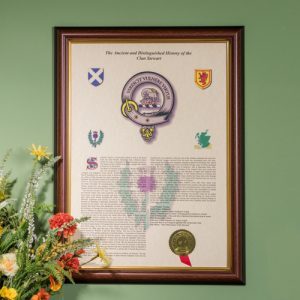Your basket is currently empty!

National Tartan Day
Posted on
National Tartan Day
National Tartan Day is a holiday that is observed on April 6th each year in the United States, Canada, and other parts of the world. The day is dedicated to celebrating the Scottish heritage and contributions made by Scottish-Americans to the United States.
The idea for National Tartan Day originated in Canada in the late 1980s and was officially recognized by the Canadian government in 1991. In the United States, the holiday was first recognized in 1998 by a proclamation issued by the U.S. Senate.
Why April 6th?
The date of April 6th was chosen because it marks the anniversary of the signing of the Declaration of Arbroath in 1320. This is a Scottish document that declared Scotland’s independence from England. On National Tartan Day, people often wear kilts or other Scottish attire, attend Scottish festivals or parades, and participate in other cultural activities.
The tartan, a pattern consisting of crisscrossed horizontal and vertical bands in different colors, is an important symbol of Scottish heritage and is often associated with Scottish clans. Each clan has its own tartan, which is used to identify members of that clan.

The history of tartan
The history of tartan is deeply intertwined with the history of Scotland. The word “tartan” originally referred to a type of cloth that was woven from wool. It is characterized by its distinctive criss-crossing horizontal and vertical stripes of different colors. The earliest known examples of tartan date back to the 3rd or 4th century AD. But it wasn’t until the 16th century that tartan began to be associated with specific Scottish clans.
During this time, tartan was used primarily as a practical garment for the people of the Scottish Highlands, who relied on the thick woolen fabric to protect them from the harsh weather conditions. Different regions and clans began to develop their own unique tartan patterns. These were often made using natural dyes from plants and lichens found in the local area. Tartan also became an important symbol of clan identity and solidarity, with each clan having its own distinctive tartan pattern.

The banning of tartan
However, the wearing of tartan was banned in Scotland following the Jacobite Rebellion of 1745, when the British government sought to suppress Scottish culture and customs. The ban on tartan was eventually lifted in 1782. Tartan began to experience a resurgence in popularity during the 19th century, particularly after Queen Victoria developed a fondness for all things Scottish.
Today, tartan remains an important symbol of Scottish identity and heritage, and it is commonly worn as part of traditional Scottish dress, including kilts and other forms of Highland dress. There are now over 7,000 registered tartan designs, and the wearing of tartan has become a popular way for people all over the world to celebrate their Scottish heritage.
Why not celebrate your own Scottish Heritage with a Clan History Scroll, or a wee dram in one of our lovely whisky tumblers?

Leave a Reply